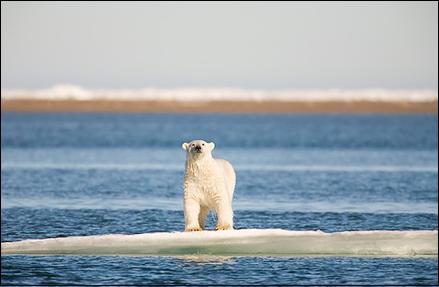
|
|

|
|
| April 25, 2024 |
|
Winterís freezing, effects vary 
Much of the US continues to dig out from record snows and shivers from unusually frigid temperatures. But at the top of the world, an unusually warm January has limited the return of Arctic sea ice, whose extent set a record low for the month, according to the National Snow and Ice Data Center in Boulder, Colo.
Indeed, through January, the season's sea-ice return is closely tracking that of ice during the winter of 2006-2007, according to data the center released earlier this week. The below average return of sea ice then contributed to a record low summer-ice extent during the 2007 melt season. Climate scientists keep close tabs on the Arctic Ocean's ice, particularly during the sun-drenched melt season, because the ice's ability to reflect sunlight back into space has a significant influence on climate worldwide, more so than Antarctica's sea ice, researchers say. Antarctica's sea ice builds quickly during its winter months and extends over large areas of the ocean surrounding the continent, even as the Arctic Ocean's ice retreats. But Antarctic sea ice shrinks quickly during its melt season, covering only a tiny fraction of the area it spans during the Austral winter, when it's dark. Arctic Ocean sea ice, by contrast, typically extends over much of the Arctic Ocean, even through the melt season, reflecting sunlight and keeping the region cooler than it otherwise would be. In January, Arctic sea ice covered 13.6 million square miles of ocean, nearly 20,000 square miles below the previous record low in January 2006 and some 490,000 square miles below the 1979-2000 average. The drivers for January's record low extent, according to the National Snow and Ice Data Center, included a natural climate pattern known as the Arctic Oscillation, as well as residual heat from the Arctic Ocean, captured and retained during the previous melt season. When the Arctic Oscillation is in a negative phase, wind patterns change in ways that can permit frigid Arctic air to plunge farther south than usual, accounting for below-normal winter temperatures in much of the US in January, including the South. At the same time however, Arctic temperatures can run above normal during a negative phase. In January, much of the region experienced temperatures between 4 and 11 degrees Fahrenheit above normal, according to the NSIDC. As February began the oscillation switched to a positive phase, which could speed ice growth for a period, according to the center. (Source: Christian Science Monitor) Story Date: February 9, 2011
|